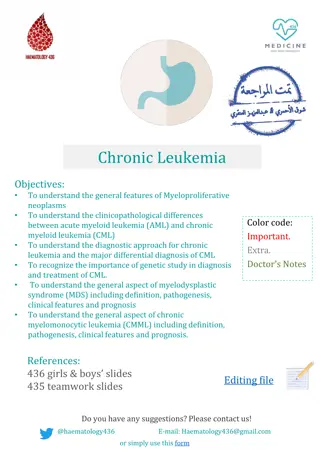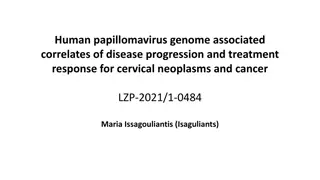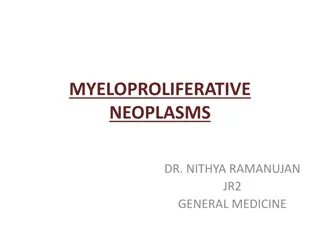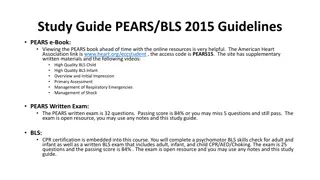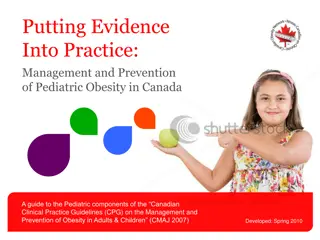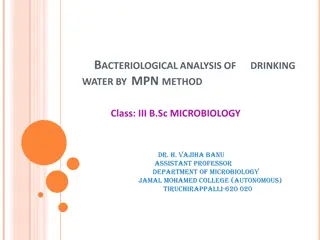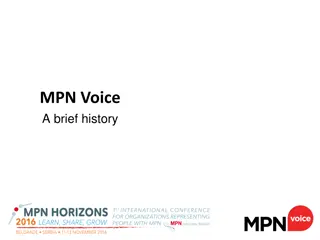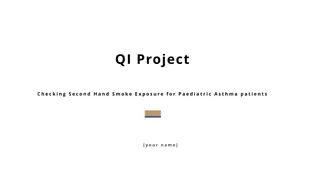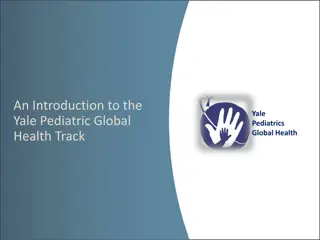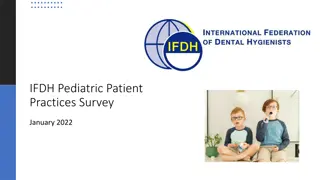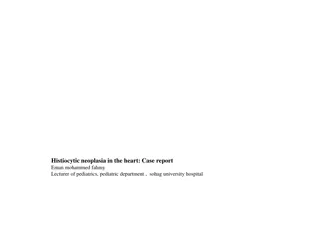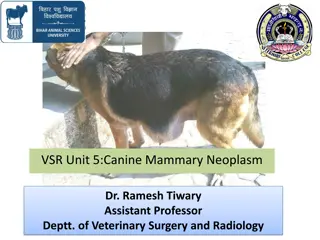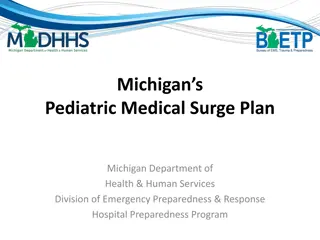Pediatric & AYA MPN: Understanding Young Patients with Myeloproliferative Neoplasms
Exploring the landscape of Myeloproliferative Neoplasms (MPNs) in young patients, focusing on the age distribution, disease prevalence, and unique characteristics like triple negative ET. Presenter: Dr. Nicole Kucine from Weill Cornell Medicine provides insights and raises important questions for further discussion.
Download Presentation

Please find below an Image/Link to download the presentation.
The content on the website is provided AS IS for your information and personal use only. It may not be sold, licensed, or shared on other websites without obtaining consent from the author.If you encounter any issues during the download, it is possible that the publisher has removed the file from their server.
You are allowed to download the files provided on this website for personal or commercial use, subject to the condition that they are used lawfully. All files are the property of their respective owners.
The content on the website is provided AS IS for your information and personal use only. It may not be sold, licensed, or shared on other websites without obtaining consent from the author.
E N D
Presentation Transcript
Pediatric/AYA MPN Nicole Kucine, MD, MS Associate Professor of Clinical Pediatrics Weill Cornell Medicine https://pediatric-mpn.weill.cornell.edu/
Disclosures Consultant Protagonist Therapeutics PharmaEssentia I will be discussing off-label use of medication in children
In the next 15 minutes we will Review some of what is known about the pediatric/AYA MPN population Pose some important questions for further discussion
MPNs are classically diseases of older adults SEER data from 2001-2017 (Abu-Zeinah, et al, ASH 2021) MPN patients had a median age of: ET = 67 years (n=17,420) PV = 65 years old (n=18,027) PMF = 69 years old (n=4,886) Approximately 1/3 of patients were < 60 years
Definitions Young adult typically refers to patients < 40 years old AYA includes older adolescents ( 16 years) and young adults Pediatric is generally < 21 years or < 18 years old
Several groups have shared data on their young patients with MPNs Authors Year Location/Group Age range (yrs) Population Boddu, et al 2018 US-MDA < 40 ET, PV, MF Szuber, et al 2018 US-Mayo 40 ET, PV, MF Barzilai, et al 2019 Israel <45 ET, PV, MF, MPN-U Sobas, et al 2022 EHA <25 ET, PV, Other MPN Harris, et al 2023 US-Hopkins <40 ET, PV, MF
ET is the most common MPN in young patients Authors Year Age range (yrs) % with ET Boddu, et al 2018 < 40 57 Szuber, et al 2018 40 61 Barzilai, et al 2019 <45 50 Sobas, et al 2022 <25 72 Harris, et al 2023 <40 67
Young patients more frequently have triple negative ET % of ET that is triple negative Authors Year Age range (yrs) Boddu, et al 2018 < 40 n/a Szuber, et al 2018 40 16 Barzilai, et al 2019 < 45 n/a Sobas, et al 2022 < 25 27 Harris, et al 2023 < 40 13* *When looking only at those 20, % of ET that is triple negative = 33%
Question 1 What additional genetic lesions are relevant for MPNs in our youngest patients? Alternative drivers? Secondary mutations?
Thrombotic events happen in young MPN patients Authors Year Age range (yrs) Overall VTE events 4% Boddu, et al 2018 < 40 (at/before presentation) Barzilai, et al 2019 < 45 37% Sobas, et al 2022 < 25 11%/11% Harris, et al 2023 < 40 20%
Thrombosis in young patients is associated with JAK2 & PV status Thrombotic Events by Mutation 25 7 out of 58 (12%) had clots 5 were female 5 had clot prior to MPN diagnosis Budd-Chiari most common type 21 21 20 15 10 7 6 5 2 1 0 0 0 JAK2 CALR MPL TN Thrombosis No Thrombosis Significant association with JAK2V617F (p=0.02) PV (p=0.01) Thrombotic Events by MPN Type 40 35 35 30 25 20 15 10 10 5 4 2 2 5 0 0 0 PV ET Pre-MF MF Shimano et al, AJH, 2022 Thrombosis No Thrombosis
Bleeding complications are less frequent than thrombotic events Overall bleeding events 1.5% (at/before presentation) Authors Year Age range (yrs) Boddu, et al 2018 < 40 Barzilai, et al 2019 < 45 6% Sobas, et al 2022 < 25 6%/10% Harris, et al 2023 < 40 3%* *When looking only at those 20, % of ET that is triple negative = 9.5%
Question 2 What are the best ways to prevent and manage hemostatic events in young patients with MPNs?
What are the indications for cytoreduction in young patients? Should risk criteria for older patients be used in young patients? Does < 60 matter when all are < 60? When is cytoreduction considered? Extreme thrombocytosis? What is the right platelet count ? In asymptomatic patients we don t have data that there is one Symptom management? Prevent progression? After progression occurs? After thrombosis or hemorrhage? aVWD without bleeding?
Cytoreduction is often prescribed for young patients EHA study: 301 (67.8%) received cytoreductive therapy Hydroxycarbamide most common 1st line Interferon most common 2nd line Reasons for starting cytoreduction included: Extreme thrombocytosis (plt count >1000 x 109/L) Pregnancy Phenotypic evolution Symptoms Sobas et al, Blood Adv, 2022
There has been limited study of specific agents in younger patients Hydroxyurea and interferons used off label in children Clinical trials for newer agents 18 years old NCCN & ELN guidelines recommend considering interferon as first line in young patients (Barbui, et al., 2018; Gerds, et al, 2022) Interferon can be well tolerated in pediatric patients (Kucine, et al, 2021)
Question 3 Which pediatric MPN patients should be started on cytoreductive therapy, and which therapies should be used?
Pregnancy in MPN patients Sobas, et al (2022) - 214 MPN pregnancies Overall live birth rate was 78% - highest in ET Landtblom, et al (2022) - 342 MPN pregnancies Increased preterm & LBW in MPNs vs controls Maze, et al (2018) - Systematic review Higher live birth rates with aspirin & IFN Robinson & Harrison (2020) offer roadmap for management approach Starts before conception & continues post-delivery
Question 4 What is the optimal management for pregnant patients with MPNs? What are the best/safest ways to study this?
In Summary There are many questions about MPNs in young patients that need further study Diagnostic criteria Target for cytoreduction Mutational spectrum How to prevent disease progression Prevention & management When to consider transplant of hemostatic challenges Who to treat and how How to manage pregnancy
In Summary. Thankfully, there are many in the MPN community working to answer these and more questions about MPNs in our youngest patients! Thank you!



